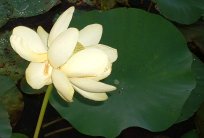Would you like to make this site your homepage? It's fast and easy...
Yes, Please make this my home page!
~ Caddo Lake ~

~ Caddo Lake at Sundown ~
Caddo Lake has been called the most beautiful lake in America by most who have seen it.
It is also a lake of mystery and lots of history. Caddo Lake is the largest natural lake of fresh water in the south, covering about 26,800 acres at 168.5 ft (sea level). The acreage can fluctuate easily to over 35,000 acres at times of high water levels.
Half the lake is in Texas and half in Louisiana and within 20 miles of southwest Arkansas. There are 4 watersheds that supply Caddo Lake with water: Little Cypress Bayou, Big Cypress Bayou, Black Cypress Bayou, and Jeems Bayou.
There are a couple of opinions on how the Lake was formed;
The first is that the1811-1812 Madrid earthquakes was the key to forming Caddo Lake such as it did Reelfoot Lake.
The other is that the lake was formed from the Great Raft, which was a large mass of fallen trees in the Red River.
This was discovered by the Freeman-Custis Expedition; who were exploring the Red River for the U.S. government. They reported the Great Raft was above and below the present location of Shreveport. In 1806 they reported that the raft had completely obstructed the channel of the Red River and had caused major flooding on all sides. This was 5 years prior to the Madrid quakes. Even with the flooding, Caddo Lake had actually been forming many hundreds of years prior to the quakes.
There was Fairy Lake (today we call it Ferry Lake) and Sodo Lake (today it is called
Soda Lake) and both were below and above the town of Mooringsport. They were
both backing up with flood waters.
Ferry Lake was where the present Caddo Lake is now. Another couple of indicators is that the growth rings on the present day cypress trees have as many as 400-600 years worth of rings on them which shows us they were here hundreds of years before the quakes.
A cypress seed will not take root on dry ground, only in the water. Also, drillers and geologists report that no evidence of earthquakes have shown up in their core samples that come from around and under Caddo Lake. So as you can see the physical and documented evidence shows us that the formation of Caddo Lake has been a long process of many events over hundreds of years.
The Caddo Indians were the first settlers on Caddo Lake. They were a friendly and peaceful tribe who hunted, fished, made pottery and weapons.
In 1835 the land of and around present day Caddo Lake was purchased from the Indians for $80,000 by the U.S. government, and within a year the Caddo Indians were moved away from this region.
Caddo Lake was also a haven for outlaws of all types. A region of the lake known as
Old Monterey was the center for this type of activity. It was noted for its racetrack,
rooster fights, saloons, and brothels, and boasted that it averaged at least one violent death per a day.
Travelers were ambushed, robbed, and murdered. Jean Lafitte, the well known pirate, had close connections in Monterey and may have visited there on several occasions. With law abiding citizens becoming more and more tired of the situation they formed a vigilante group and called themselves the Regulators. As time would have it, the Regulators became so abusive themselves that an opposing group, the Moderators, was formed in order to maintain the Regulators.
Real war broke out between the two groups where pitched battles, armed forts, and cannon fire was common. Paddleboat and steamboat traffic through Caddo Lake was in full swing by the 1830's - 1840's and was used for everything from commerce trade of iron ore, cotton, leather goods, and many other trade items to the transportation of people.
During the civil war, steamers were used to move both military and civilian supplies to the rest of the confederacy. In 1873, after the civil war, the remaining portion of the Great Raft of the Red River above Shreveport was removed. The water level in Caddo Lake and the Soda lakes gradually became lower and lower. This was irreparable damage for navigation on Caddo Lake by the end of the century.
With the booming economy from the boats now gone from the lowered waters on Caddo this gave way for a new economy boom for Caddo Lake which was pearls.
At the height of the pearl boom, campfires could be seen for miles around the shores of the Big Lake of Caddo. But the pearling industry had a short life, also. It ended when the first dam on Caddo Lake was built. With the higher water flooding the mussel beds that were harvested by wading, this gave way to another destroyed way of life on Caddo Lake.
At the turn of the century oil was discovered on and around Caddo Lake and this is where the first over the water drilling platform was built in the U.S. Even to this day there is still wells pumping from the black waters of Caddo Lake.
Today oil, fishing, and lodging is the life of Caddo Lake and looks to stay that way for a long time to come.
~ ~ ~ ~ ~ ~ ~ ~
One of the most peaceful places on earth.
© Denim & Lace 2004
Photography by Toynette Bird
Sundown on Caddo Lake ~ 09/05/04

Click to go back to the Denim & Lace Index Page
September 7, 2004
| | |
22

